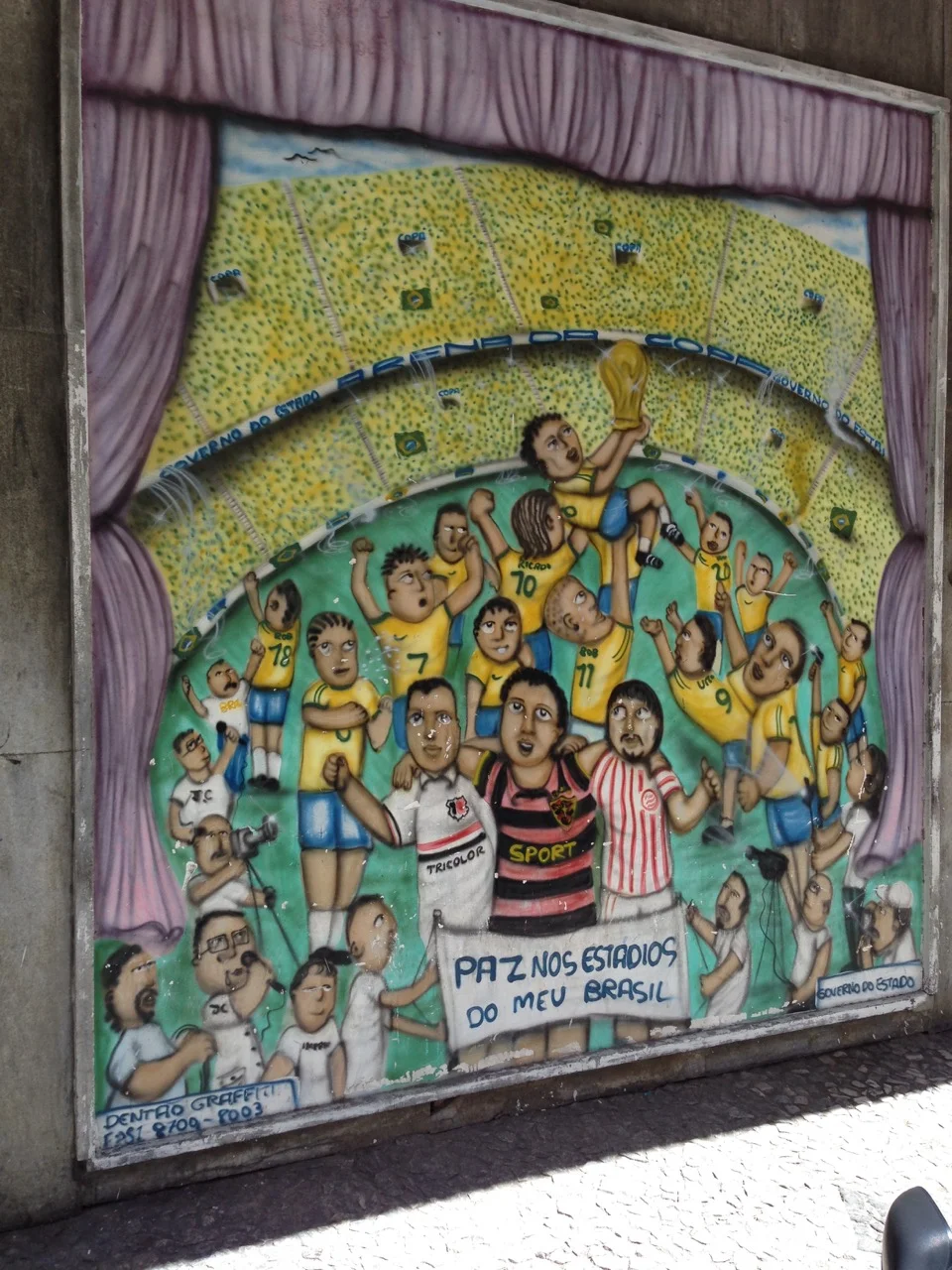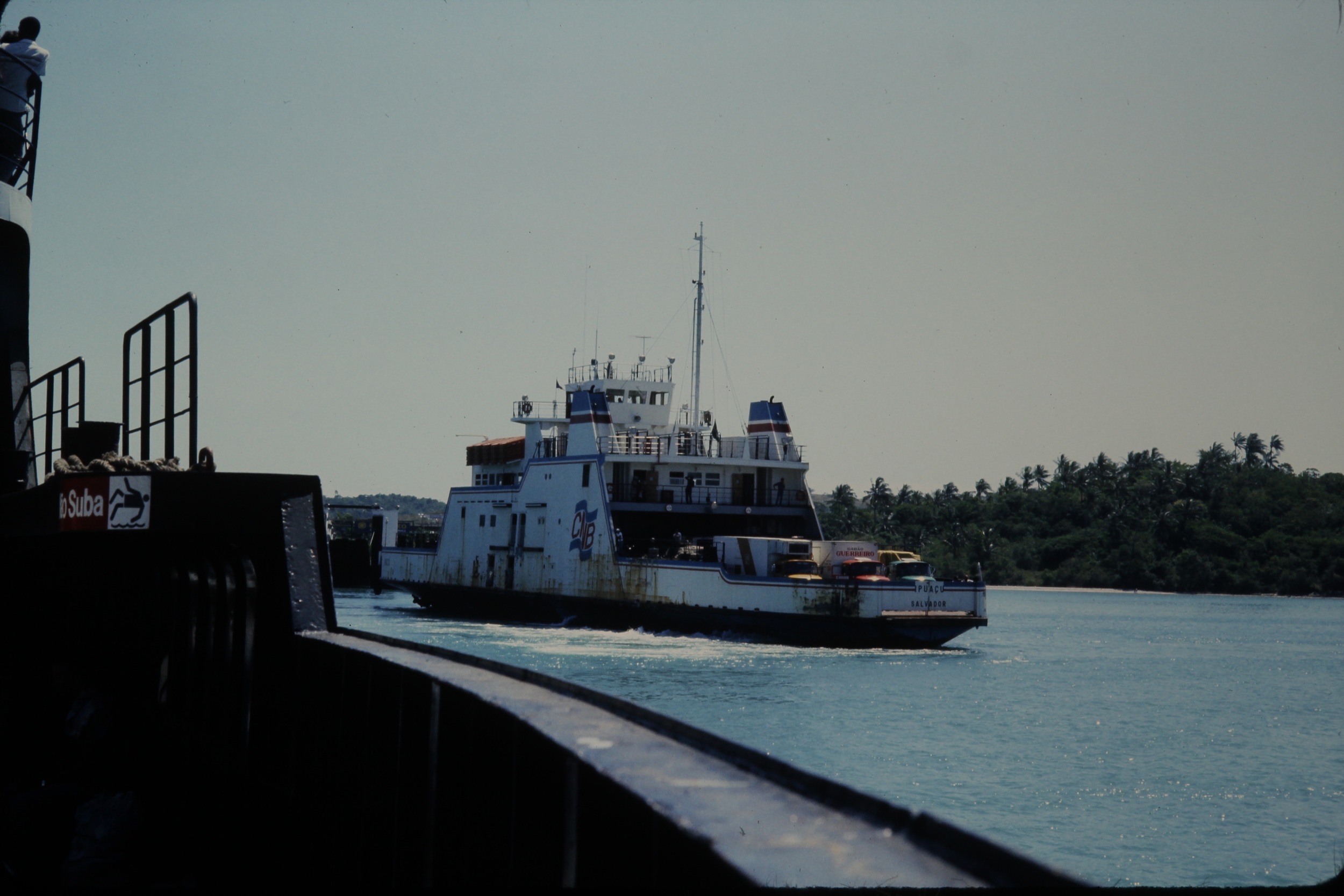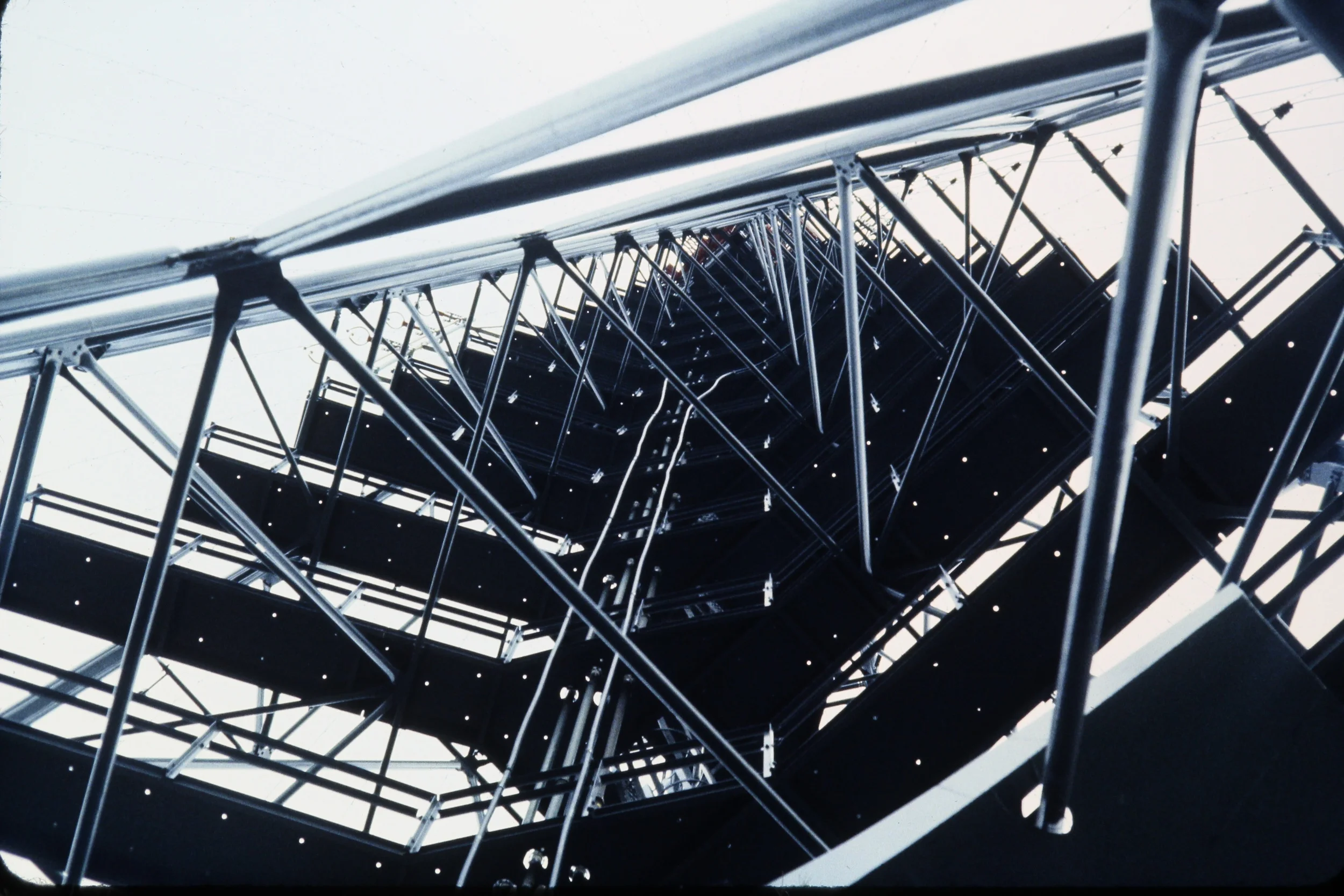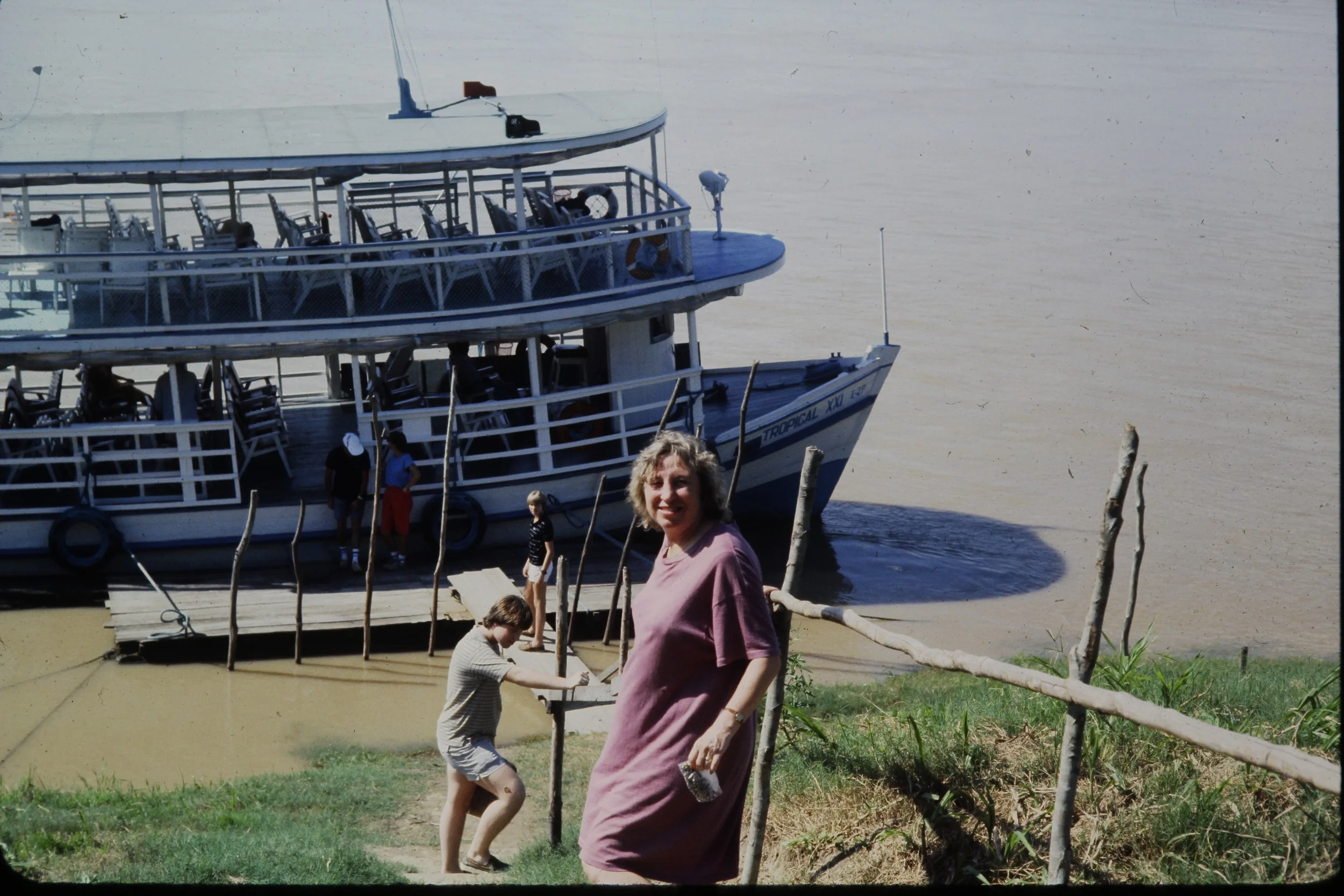Brazil - 1985, 2018
In 1985 the Brazilian airline Varig offered a Brazil Air Pass, three weeks of unlimited travel throughout the country at a reasonable cost. Realizing the size of Brazil, and wanting to see as much of it as possible, Misti and I got air passes for the two of us and our two sons and in December, 1984 headed south.
It was our second trip to South America and our first to Brazil. Before leaving we looked at a map and decided on a rough itinerary, which we changed as our trip progressed. This was long before the Internet and GPS, so online research and planning didn’t exist. Brazil is huge; with 3.2 million square miles it’s the fifth largest country in the world, and the largest on the South American continent. It’s too big for surface transportation, so the Brazil air pass enabled us to see much of the country in a short period of time.
We flew San Francisco to Rio de Janeiro, by way of Houston, and then went on to Salvador de Bahia, for our first few nights. We had read about Salvador, the capital of Bahia state about a thousand miles north of Rio, and with its Portuguese colonial architecture and Afro-Brazilian culture it was a good beginning for our trip
While my Spanish language skills had improved from a three-month trip in 1976 through Mexico and Guatemala, we quickly learned that Portuguese is the language spoken in Brazil. Because Brazil is surrounded by Spanish speaking countries, Spanish, however, worked reasonably well, certainly better than English, which few Brazilians speak.
The highlight of our trip was spending New Year’s Eve in Copacabana Beach, with several million Brazilians celebrating into the early morning hours. We were staying in a small boutique hotel, the Oro Verde (Portuguese for green gold) overlooking the beach, which enabled us to watch the festivities from our balcony.
We didn’t go to Rio specifically to see the New Year’s celebration, but it was a special treat. We learned that about two million people from all over the world were celebrating on Copa Cabana and Ipanema beaches, making it the largest New Year’s Eve celebration in the world.
As we looked down on the festivities, we saw hundreds of thousands of revelers dancing and singing in the streets, drinking beer and caipirinhas, the national drink, sound trucks blaring samba music and pilgrims lighting candles and floating them out to sea for voodoo offerings. From our balcony we were able to see the Meridian Hotel, draped with what appeared to be a flow of fire, very spectacular.
Rio is the perfect venue for any party or festival. It’s a wonderful natural setting with beautiful beaches back dropped by verdant mountains and Christ the Redeemer, atop Corcovado Mountain, watching over the city.
Driving in Rio was a hoot, and in 1985 it was like the wild west. Red lights were treated like stop signs, slow down and keep going, and cops never bothered you. Fuel for cars, buses and trucks, made from sugar cane, was called alcool, and you could almost get drunk from smelling it as you walked through the streets.
On our first day in Rio, Misti and I decided to take a public bus down the malecon (esplanade along the sea), just to sightsee and mingle with the locals. We didn’t realize it, but the bus continued on into one of the worst favelas, or shanty towns, known for its crime. As we were sitting on the crowded bus, with Misti by the window, a young boy of perhaps ten stuck his hand through the open window and grabbed her necklace.
While he pulled, she moved away, and he didn’t get the necklace; it didn’t hurt Misti but scared her. The necklace was a simple gold chain and not expensive. I tried to get off the bus to chase the kid, but no luck because the bus was packed with people standing in the aisle so I couldn’t get off and the kid ran away. It was probably a good thing because it gave us an early warning about crime and put us on guard to be careful with valuables.
Our Brazil Air Pass gave us unlimited flights throughout the country. After a week in Salvador de Bahia and Rio, we decided we’d visit the capital, Brasilia, Manaus, in the Amazon, Belem on the northern coast, Foz de Iguazu in the south, and then return to Rio to fly home.
Brasilia, about seven hundred miles from Rio, was built in 1960 to open the country’s vast interior and relocate the government and capital seat. The Brazilian architect, Oscar Niemeyer, was retained to design and build the new ultra modern city. We rented a car and spent two days exploring the amazing architecture: public buildings, plazas, fountains, churches and parks, all built on a grand scale.
While driving through the city we noticed it was never possible to make a left turn. Rather, you always had to turn right and go around the block, never turning to the left. We learned this was because the architect’s wife had been killed in an auto crash involving a left turn, so all streets were built without left turns.
From Brasilia we flew on to Manaus, deep in the heart of the Amazon rainforest, the capital of the state of Amazonas, and a four-hour flight from Rio. It was weird to be in an isolated urban city in the middle of an untamed jungle, with roads that went on for hundreds of miles through rainforest. It had a primitive frontier feeling about it. Even though Manaus is almost one thousand miles from the Atlantic Ocean, it’s a major port for seagoing vessels, reaching the ocean via the Amazon River.
An unusual sight was the “Meeting of the Waters,” where the dark Rio Negro River meets the brown, muddy Solimoes River, resulting in a striking visual phenomenon. The two combined rivers form the mighty Amazon, which is the largest river in the world by discharge volume of water and is more than four thousand miles long. Its massive discharge into the Atlantic is greater than the next seven largest rivers combined.
In Manaus we had our first experience with an intense tropical downpour. We were driving on the outskirts of town when the heavens opened like we had never seen. I lived for six years in Miami and thought I had seen some tropical downpours, but nothing like this. In a matter of minutes the streets became rivers and our small car almost floated away. It only lasted thirty minutes, but we couldn’t believe the volume of water that fell.
Other than the rivers and jungle, there weren’t many tourist attractions in Manaus, but one we did visit and loved was the Teatro Amazonas, or Opera House. Built in the late 1800’s during the Belle Epoque period, with monies made during the rubber boom, it’s a copy of the Grand Opera de Paris. The floors were constructed from several varieties of Brazilian hardwood and, wearing foot coverings, the kids had fun sliding along the polished floors.
Our final stop was Iguazu Falls, waterfalls of the Iguazu River on the border of the Brazilian state of Parana and the Argentinian Province of Misiones. The falls encompass an area of 1.7 miles in width and make up the largest waterfall system in the world. The name Iguazu comes from the Guarani Indian words meaning “water” and “big”. There are 275 cataracts, or falls, with the highest drop being almost 300 feet. Walking along them makes Niagra Falls seem like a kitchen faucet. The 1986 movie, “The Mission,” about a Jesuit priest in 18th century South America, was filmed at Iguazu Falls.
Toward the end of our trip we decided, spur of the moment, to go into Paraguay, a neighboring country. The distance from Iguazu to Asuncion, the capital of Paraguay, is only about two hundred miles, or a one-hour flight. We only stayed in Asuncion two nights, barely enough time to get a sense of the country.
My best memories of Asuncion are of a restaurant where we had dinner the first night. It was probably the best restaurant in the country, not expensive since the dollar was very strong against the Paraguayan guarani. As we were going down the staircase, leaving the restaurant, we encountered a group of high-ranking military men, probably generals and admirals, with lots of medals and decorations. I stopped to briefly chat with them, in my broken Spanish, and said we were Americans from California. I think we may have been the first Americans they had ever met, and they smiled and rattled on a welcome in Spanish. That was a fun encounter.
We returned to Rio for our flight home, and thus ended our first Brazil adventure.
Brazil- Second trip- 2018
In December, 2018 we took a transatlantic cruise on Oceania’s ship, Marina. The cruise began in Lisbon, and made stops at Cadiz, Spain, the Canary Islands and Cape Verde before making a three-day passage across the Atlantic Ocean. It made three stops in Brazil: Recife, Salvador de Bahia and Cape Frio, before ending in Rio de Janeiro. We didn’t spend any time in Rio but rather took an Uber from the pier to the airport where we had a rental car waiting for us.
Since we had been to Rio twice before, we thought this time we’d explore a different area. We looked online and in Lonely Planet, and learned about both Paraty (pronounced Para-che) and Petropolis, both small Brazilian cities not often visited by American or European tourists. Our plan was to first spend two nights in Paraty and then another two nights in Petropolis, before heading back to Rio to fly home. It was a good plan and provided the Brazilian adventure and experiences we craved after being on a cruise ship for sixteen days.
Paraty is a real gem that hasn’t as yet been discovered by foreign tourist hordes, but that could soon change since several cruise ships are scheduled to visit in 2019. There are plenty of tourists, but they’re almost all Brazilian, since the town is located near both Rio de Janeiro and Sao Paulo, with a combined population of almost forty million.
Paraty is located on the Costa Verde, a lush green corridor that runs along the coastline of the state of Ro de Janeiro, south of Rio. The setting is spectacular with jungled mountains plunging into beautiful bays studded with islands. The town is known for its colonial buildings, dating back to the 18th century, when the area produced a great deal of gold, which was shipped back to Portugal.
The highlight of Paraty is the old town, closed off to vehicle traffic and filled with cobblestoned pedestrian streets, lined with bars and restaurants, that come alive at night. The old irregular cobble streets are historic and quaint, but walking them, especially with sandals, could result in a trip to the hospital. The town’s flavor is enhanced by many resident artists, writers and chefs.
As we usually do, we booked a hotel (pousada in Portuguese) through Hotels.com, but when we arrived we saw it wasn’t nearly as nice as was advertised on the website. We spoke with the owner, told him we were cancelling and why, and that we would ask hotels.com for a refund. We’ve only done this once before, but felt it was appropriate since Hotels.com should realize the property was being misrepresented. We went to the tourist office, spoke with the young woman at the desk, Yara, and asked if we’d have trouble getting a room. She smiled and said there were more than nine hundred pousadas in Paraty and we’d have no trouble.
When we first drove into town we saw a small pousada alongside the canal that looked nice and had a swimming pool, and Yara gave us the name, Pousada Corsario. It was just a few minutes away, they had a large room facing the canal, at a reasonable price of $125 a night., it was close to the old town and had a small bar and restaurant. The staff was pleasant and helpful, spoke some English, and the place was exactly what we were looking for. We spent two nights there and we recommend it to anyone traveling to Paraty.
Before Paraty, I had forgotten what it’s like to be really hot- sweaty, sticky, steamy hot, so your shirt sticks to you when you take it off. We’ve lived in the San Francisco Bay Area for more than fifty years where it’s never very hot and humid. But 200 miles south of Rio de Janeiro in December, the height of Brazil’s summer, is a quick refresher course in what it means to be hot and to worship the god of air conditioning. Fortunately, only for a few days before returning to San Francisco’s cooler climate.
We left Paraty, headed for Petropolis, about two hundred miles to the north. Google said it was a five-hour drive; it took us seven with lunch and gas stops. The drive gave us a chance to see more of the Brazilian countryside and took us through three states: Rio de Janeiro, Sao Paulo and Belo Horizonte. The first two hours of the drive were the most scenic, from the coast up a mountain through jungle terrain and a National Park; after that it was mostly a straight, divided highway.
Petropolis is called the Imperial City and its name, “City of Peter,” honors Pedro II, the last Emperor of Brazil. The city was where Brazilian emperors and aristocrats lived during the summer when temperatures and humidity in Rio de Janeiro were extreme. It was the official capital of the state of Rio de Janeiro during the first Brazilian Republic. The city is considered one of the safest in Brazil, was the first in the country to have a paved highway and also was the first city outside the United States to have telephone service.
We arrived Petropolis early on a Sunday evening and, using Google Maps, easily found our way to the hotel we had booked, the Solara do Imperio. While the hotel looked OK online and had good reviews, we were blown away when we drove though the huge iron gates onto the immense grounds of what was built as a palace, in 1875. We climbed the marble stairs, were greeted by a receptionist who struggled with her English, and were shown to our suite overlooking the palace grounds.
The room had high ceilings, many antiques including a ten-foot high mirror and Brazilian hardwood floors, all in top-notch condition. An excellent value at $150 a night.
Also, the best restaurant in the city, Leopoldina, was located in the hotel. A spacious grand belle of a room, decorated in colonial style with high windows and Brazilian hardwood floors in a decorative pattern, and balconies overlooking the city’s main plaza. It was between seasons, just before the holidays, and we had the hotel and restaurant pretty much to ourselves. The food was excellent, the service impeccable and not at all expensive. We were living like royalty and enjoyed every minute of it.
The hotel is centrally located across from Liberation Square, near the Imperio Museum and other major sights. Being a Sunday, and close to Christmas, we expected the city would be in a celebratory mode, and it was, big time, with holiday lighting everywhere, tens of thousands of Brazilians in the parks and streets, partying and dancing and just a buzz of holiday energy.
We later learned it was Natal Imperio week, or Imperial Christmas, and Brazilians flocked to Petropolis from the surrounding countryside to celebrate. It was just luck that we happened to arrive on a Sunday night, the end of the weekend, so we were able to see this celebration. The next day and evening were considerably quieter.
The first night we went looking for a bar to start our evening with a caipirinha, the Brazilian national drink. We were surprised that there were no bars to be found, other than small beer joints. We heard loud music, followed the sound, and came upon a music/dance hall filled with hundreds of sweating Brazilians dancing to some of the loudest music we’ve ever heard. Made me realize the energy level of this country of two hundred plus million, most of them young.
Eating by the kilo: Driving from Paraty to Petropolis we stopped for lunch at a roadside restaurant that we thought was a cafeteria. We had seen a billboard that said it served lunch by the kilo, which we didn’t understand but thought we’d give it a try. In the restaurant we found a large buffet area with all sorts of good food. When you enter the restaurant you’re given an electronic card. You take a plate, fill it with whatever food you want, take the plate to the checkout where they weigh it and the cost is recorded on the electronic card. You can purchase other things, including groceries and souvenirs, with their cost also recorded on the card, and then finally give the card to a cashier and pay by cash or credit card. Seemed like an Uber restaurant.
Driving in Brazil: Americans often seem to have a fear of driving in other countries. Some countries are more problematic than others, but we found driving in Brazil to be easier than most other countries, especially Peru and Argentina, which seem to have large amounts of machismo and very aggressive drivers. The highways are good but the signage is sometimes lacking.
When we were driving along a deserted four-lane highway in Belo Horizonte, with nothing to be seen for miles, we noticed that there were thousands of solar powered street lights, spaced on both sides every twenty feet. We thought that was strange, especially since there were no buildings, houses or anything in sight, and the cost must have been incredible. We later learned that the highway had a great deal of crime at night, so the lights were installed for safety. Also, Brazil is an oil-rich nation and the good highways are just one indicator of their wealth.
Language: Because California has a population of twenty million Spanish speakers, and I’ve lived there more than fifty years, as well as travels to many Spanish-speaking countries, my command of Spanish is reasonably good. There are many similarities between the two languages, especially the written part, and I was able to leverage my Spanish to enable basic communication. Being able to read most of the road and traffic signs, which are only in Portuguese, made driving easier.
On this trip we became Uber fans. We had used Uber in the past, more in other countries because we had little reason to use it at home, where we have our cars. But in Brazil it was great: fast, efficient, easy to use, safe and inexpensive. When our cruise ship docked in Rio we had to get from the port to the airport to pick up our rental car. We had planned to use Uber, but first I asked several taxis what the cost would be, and was told about fifty to seventy dollars. MIsti used her Uber Ap, within a few minutes a new Renault sedan appeared, we were whisked to the airport and the fare was about twelve dollars, charged online to our credit card, no cash involved. In foreign countries where taxis can, and often do, take advantage of tourists, Uber is the way to go.
After two nights in Petropolis, we headed to the Rio airport to return the car and begin our journey home; a ten hour flight to Houston and then another four hours to San Francisco. Misti used Google Maps to guide us to the airport, but because there was so much highway construction, both Google and Misti got lost. After driving in the wrong direction for thirty minutes, I decided it was time for “taxi navigation.” We found a taxi stand, I explained to the driver, using a mix of Portuguese, Spanish, English and sign language, that we were headed for the airport and were lost. I told him we’d like to follow him to the airport and would pay him when we arrived. I asked for the cost and was told about the equivalent of twelve dollars. I made sure to follow him closely, we arrived at the car rental office, paid him, and were soon on our way home.
Art Faibisch, written December, 2018











































































































